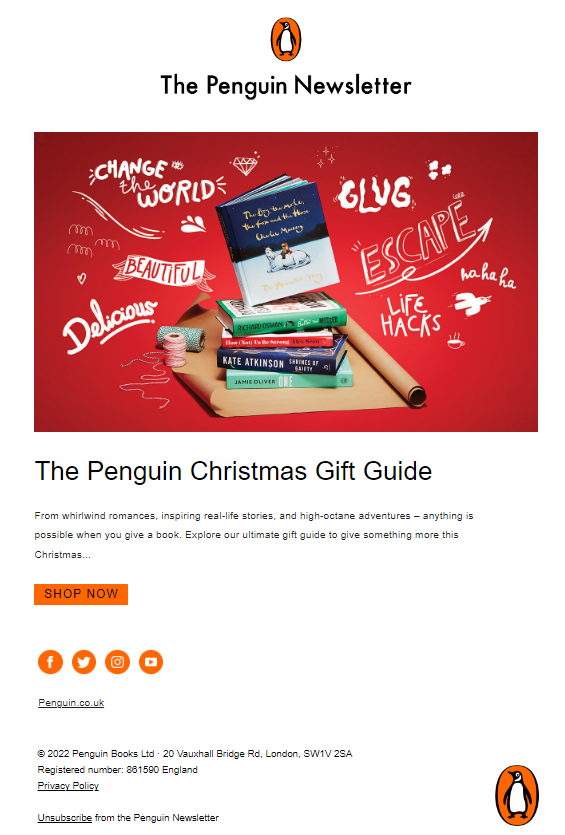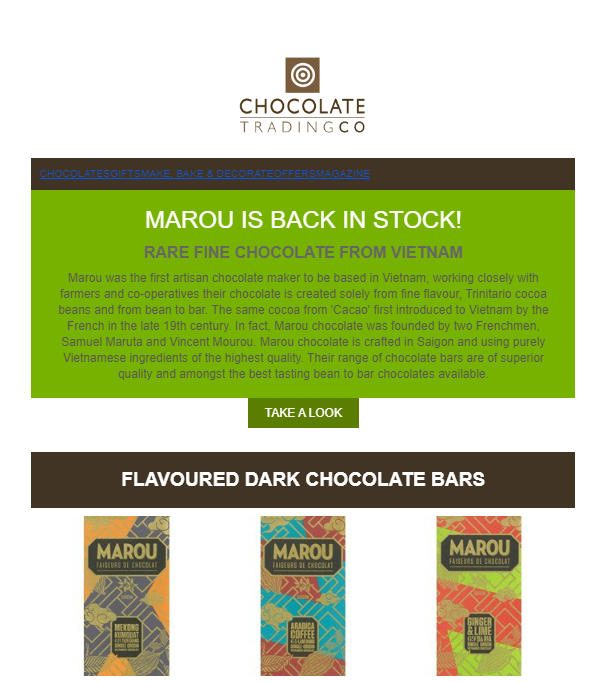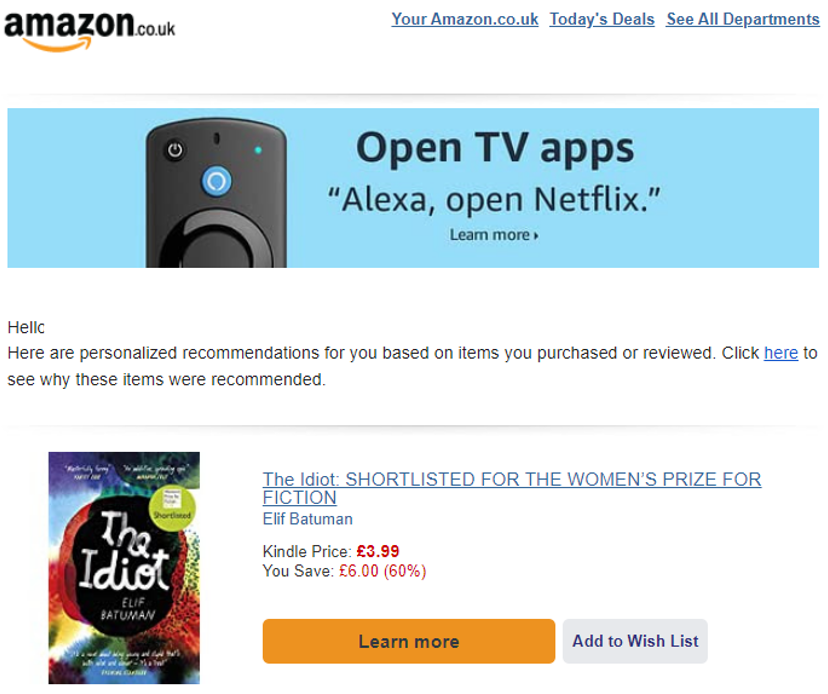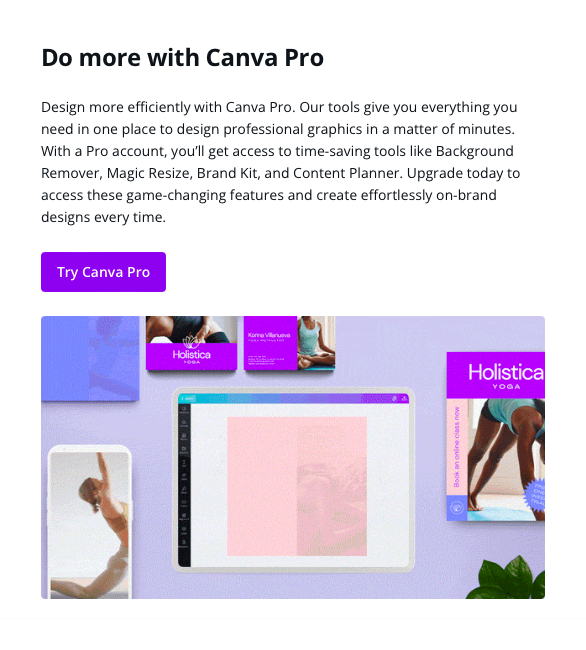
You are a clever marketer, and, just like any clever marketer, you know how essential it is to have a solid email marketing strategy. Yes, because email is still one of the most effective, affordable, and far-reaching marketing tools today, despite not being one of the newest.
Even so, now and then, your email marketing campaigns might run out of fresh, exciting content that entices your audience and helps boost your sales. If that is the case for you, this article is essential.
This comprehensive guide will find the best tips, ideas, and recommendations on how to craft exceptional content for your email marketing campaigns – whether you are sending your messages to a prospective client or a well-established one.
Let’s jump right in!
In email marketing, you want – and need – to proceed in order, crafting and sending messages that seamlessly adapt to your target customers' specific funnel stage.

Whether your customers have just subscribed to your mailing list, are viewing items on your website, or have already made a purchase, you want to have the perfect email to keep them coming back for more.

Any marketing funnel begins with the awareness stage. This is when a lead, or prospective client, first discovers your brand and its products or services.
There is a lot to gain – and, conversely, lose – at this stage, as your lead will start forming the first impression of your company. For this reason, it’s crucial that you present content that is informative and captivating while at the same time being easy to read, digest, and share.
Below are some great email marketing examples you can create and send to clients in this funnel stage.
One of the first things a lead might do when they come across a new brand is to subscribe to their newsletter. This is a simple and painless way for your leads to learn more about you without actually having to buy anything from you (yet).
Therefore, a welcome email is a perfect way to break the ice, make a top-notch first impression, and spark more curiosity and interest in the reader.
Take this opportunity to thank them for subscribing, tell them a bit more about your brand, and invite them to try out some of your newest and best-selling products or services.
Cosmetics brand Lush is a great example of this. They use their welcome email to introduce subscribers to their brand and include links to more information about their products and company.

Now that you have your first email subscriber, it’s time to put your creative hat on and start crafting some stellar content for your email newsletters.
When deciding on the topic and style for your email, it can be helpful to remember that your newsletters should generally always be pretty short, very engaging, and at least partly interactive.
Consider incorporating GIFs, short video clips, or simple images to get your reader’s attention and gently guide them to the next funnel stage.
Publishers Penguin keep their newsletters short and to the point, hooking the reader with an unfinished sentence and a clear call to action.

Sometimes, a new (potential) client starts setting up their profile on your website, but they don’t complete it. In that case, sending them a reminder email is a respectful – and effective – way to nudge them into action.
The example below is aimed at reminding customers that their discount code is about to expire. It conveys the message in a clear and concise way with a sense of urgency, encouraging readers to take action.

Who doesn’t love good social proof? New leads can be particularly attracted to these, as they value what other people like them think about your brand.
Therefore, adding social proof to your email can significantly support your sales cycle. Show off how great your brand is not by telling your reader, but by letting other customers take center stage and praise what you do (and how you do it).
An example of social proof can be seen below. Here a fabric company makes use of an independent review platform to highlight their high ratings,

Because one of the main aims of the awareness stage is to showcase the best your brand offers, you might consider crafting a few curated emails.
These simply consist of a selection of products or services that you think might spark your reader's interest and incite them to find out more.
Pinterest sends great examples of curated emails. They send their subscribers eye-catching collections of boards to keep their readers interested.

The second stage of the marketing funnel is the consideration phase. At this point, your lead is starting to demonstrate an active interest in your company, so you need to plan your content extremely carefully if you want to increase your chances of turning them into paying customer.
What you’ll need to do now is provide your potential customer with more in-depth information about your products or services and educational content that is interesting and easy to digest.
You are analyzing your website traffic and realize that a customer spent a good amount of time browsing your product selection but left the website without making a purchase. Does this sound familiar?
If so, you might want to send them a browse abandonment email where you suggest similar products to the ones they showed an interest in and maybe even offer them a small discount if they complete their purchase within a specific timeframe.

If you have an online store, you’ll agree that one of the most frustrating things to happen is noticing that a customer has added some products to their cart, only to abandon the purchase entirely.
Luckily, this doesn’t always happen because the customer has suddenly lost interest in those products. Sometimes, it’s out of pure distraction (life happens, right?), so you’ll want to get to the bottom and ensure that the purchase is finalized.
Sending a cart abandonment email is a great way to achieve this. It works as a gentle nudge to remind your potential customer that some amazing things are waiting for them in their cart once they complete the buying process.

Sometimes, a potential customer disappears into thin air because a product they wanted was not in stock when they browsed your website. Once the product is available again, it’s time to let them know ASAP.
A back-in-stock email is a great way to do this, as it creates that sense of urgency that you want to convey to guide that customer toward a purchase.

Analyzing your website traffic can reveal a lot about your customers’ behavior in your online store, especially when finding out what they like or need.
And if you notice that a specific customer seems unsure just as they’re about to buy a specific product, you might want to intervene immediately with a last-chance email. In it, you will simply need to include some short, punchy content that entices them to buy the product before it’s too late and it’s no longer in stock.

Do you remember the social proof emails you sent to customers in the awareness phase? Well, in the consideration phase, you can send similar emails that showcase how fantastic your brand is from the point of view of some of your happier customers.
This time, you can dare to be bolder and include GIFs, video testimonials, and other engaging and interactive elements.

Engaging with your would-be customers is a must in the consideration stage. Therefore, crafting a solid engagement email is a no-brainer.
Think about creating email content that engages your readers by offering something that’s not only cool and fun but that is also genuinely useful and helpful. This will make it clear to them that you truly care about helping improve their lives with your product or services and are not just looking to make a quick sale.

Whenever you launch a new product, you need to create A LOT of hype around it if you want potential customers to consider buying it. Be as creative as you want in your email, but remember not to reveal ALL about your new product.
Giving only a cheeky sneak peek into your it should suffice when it comes to boosting that sense of FOMO that, ultimately, turns lookers into bookers.

We all like a fun, playful, and interactive email, but at the end of the day, we also need to understand HOW products work, in practice, and how they can truly help us achieve what we want and need.
This is especially true when we come across a new brand that we know very little about or when we want to learn how to use specific tools, such as call center applications.
So, put yourself in your potential customer’s shoes and consider sending informational and educational emails packed with valuable content that clearly illustrate the benefits they might reap from using your products or services.

If you manage to get a customer to the conversion stage, then first of all, congratulations! You are one step closer to making a sale and, if you play your cards right, winning that new person's trust and loyalty (and steady business).
At this point, you’ll need to focus on showing them how much better you are compared to your competitors. For example, you can demonstrate how easy and secure your payment systems are, or you could show off some of your awards and the qualities of your products that set them apart.
Below you’ll find a few excellent ideas to apply to your email marketing campaigns for customers in this funnel stage.
Arguably, nobody loves a discount more than a customer who is just about to buy from you for the first time. Even the tiniest amount can encourage them to hit “buy” on your product page – and entice them to stick around in the future.

Seasonal events and celebrations are a huge opportunity for online businesses to ramp up their sales, and sending a holiday email can help a lot in that sense.
Whether it’s Christmas, Valentine’s Day, or Black Friday, make sure that you prepare a catchy and compelling email in advance and send it to all your contacts currently in the funnel's consideration stage.

When a new lead is about to make their first purchase from you, something that can help guide them towards becoming a paying customer is showcasing that you are a real expert in your field.
How can you do that? With a recommendation email. Not only are these hyper-personalized and more likely to hit the spot (thank you, web analytics), but they also demonstrate your care, knowledge, and expertise in your specific area.

Do you remember the concept of “FOMO” that we briefly mentioned earlier? Well, this “fear of missing out” lies at the root of a countdown email.
If you know what a customer is interested in, send them an email with product or service recommendations AND a countdown timer to urge them to shop ASAP to get what they want or need before it sells out.

When the sales are coming, your sales email needs to be ready to go – and ready to hit the mark with content that generates buzz, showcases some of the best products you’ll have available and drives your would-be customers to fill up their online carts.

Yay, you’ve arrived at the retention stage – one of the most coveted places for any business. This stage is about loyalty, exceptional customer care, and keeping in touch with your customers (without pestering them with constant content, which will have the opposite effect).
Now that you have won over a customer, you also want to ensure that they recommend you to other people so that you can transform them into real advocates for your brand. The retention stage is the perfect time to shift your attention to social media, where most online users hang out these days.
Therefore, you should create email content that can be easily shared on the social media platforms where your brand is active (if you have a large social media presence, read here to find out how to manage all social media in one place).
Keep reading for more inspiration on retention stage email marketing campaigns.
Your customer, and your brand have gone on a (possibly long) journey together, and the least you can do to show them how much you value them is to thank them for their trust and loyalty.
To achieve this, a thank you email can work well. The best bit? You don’t even need to sell them anything or communicate anything else: it’s a pure and simple “thank you.” Just because.

A fabulous way to keep your loyal customers always raving about you is to launch regular giveaways – and you can do that via email, of course.
This helps keep them interested, involved, and engaged, and actively rewarding them with products, deals, or discounts that encourage more purchases.

Do you have that one long-term customer who just doesn’t seem to budge from their standard membership or who always buys only the lower-tiered products from your range?
This is the time to try to upsell or cross-sell something more valuable (to you AND them) via email. Suggest a newer and improved subscription, for example, or say something along the lines of “We know you like [PRODUCT X], so we thought you’d LOVE [PRODUCT Y – a better and more expensive version].

Did you know that order confirmation emails are among the ones with the highest open rates ever? This is because customers want and need to have the certainty that the hard-earned money spent on one of your products is effectively going towards an order that has been received and is being fulfilled as promised.
So, give them exactly what they want by sending them an order confirmation email as soon as you have received and processed their purchase.

Good old word of mouth is still one of the most popular and effective marketing techniques. In our digital world, you can send your loyal customer a referral email asking them to recommend them to their loved ones.
In return, if the person they recommended purchases from you, you can offer your original customer a discount, or you can reward them in another way.

Let’s face it: when it’s our birthday, we appreciate good wishes coming from all corners of the world – including the brands we love the most.
Don’t let your most valuable customers down on their special day - send them a birthday email with a special offer or discount to celebrate with them.
And don’t think that this just applies to brands selling consumer goods. Those in the service sector, such as hosted VoIP services, can send their clients birthday emails and enjoy the same benefits.

Overwhelming evidence points toward customers becoming more and more sustainable and socially responsible. Study upon study has demonstrated that these days, consumers are actively on the hunt for brands that share their values and ethics, and that can prove it.
If you want your hard-won customers to stick around, it’s clear what to do. Team up with a cause close to your heart (and your brand) and implement environmentally sustainable practices.
Once you’ve done that, send a social responsibility email to your contacts. This shows them the lengths you’ve gone to, not only to be more in line with their needs and expectations but also to make a real, positive, and tangible difference to the world.


Customers LOVE it when they feel valued, appreciated, and listened to. Asking for their ideas and opinions can be a winning tactic to keep them as close as possible for as long as possible.
Consider creating an email survey or similar to gather customer feedback on specific topics, and you will achieve this – and more.

Now that you know what type of content is best suited for each of the four stages of your marketing funnel, it’s time to make sure you’re all set up to ensure your emails always hit the spot.

First of all, you are going to want to put together an email list of contacts that you are going to target with your email marketing campaigns. Next, you will need to curate that list by ensuring that each person added to the list is aware of it and consents to it.
Another important step is verifying that those on your email list are actively engaging with you. While some people will voluntarily unsubscribe if they are not interested in hearing from you, many more will simply ignore you.
In the latter case, you must take some time to find out who these people are and remove their contact details from your email list directly. Unengaged subscribers can greatly damage your email campaign performance, so you are better off without them.
A/B testing is a fundamental aspect to consider if you want to take your email content to the next level truly. This is much simpler than you may think.
For example, when you are in the process of writing a new email, consider sending out two different subject lines and check which one has the highest open and engagement rate.
This type of insight can be incredibly useful in telling you what your readers like and don’t like, which in turn helps guide you toward more effective choices.
Gated content refers to information only available to people who subscribe to your email newsletter. The concept is simple: they give you their (very valuable) email address in return for some (very valuable) information they want or need.
For this reason, offering gated content can be a winning strategy for email marketing.
Segmenting your audience is vital if you want your email content to be truly exciting, informative, and conducive to a final purchase.
Therefore, before you even set out to craft your first email, remember to carefully divide up your readers based on a series of features that are important to your brand (for example, their age, their gender, their location, their job title, and so on).
While this may sound complicated, it’s important to remember that you don’t have to manually do it; it would be too time-consuming and error-prone.
Select a safe, trusted, and easy-to-use software program that can assist you with the automated segmentation of your audience. Simply create your categories, add the email addresses from your contact list, input the required data, and hey, presto! You will have an up-to-date, accurate, and complete list of segmented contacts.
Now, you can move on with writing email content that every one of your readers will be truly interested in.
You know, when you wake up in the morning, start making yourself a cup of coffee and Spotify provides you with the perfect playlist to get yourself in the right mood for the day?
Well, that’s a great example of how hyper-personalization can keep attracting repeat customers to the brands they love. Just as Spotify continues to update your personal playlist by adding only tracks that it knows you will love, your emails should contain ultra-customized content designed to delight, stimulate, and influence your readers.

Another essential aspect that your emails should always include is a link to your social media pages. Whether you are only active on one platform or have a solid presence on several, remember to always add a “Follow us” prompt at the bottom of your emails.
If you have been sending your emails at random times of the week and the day, and have not seen any tangible results yet, then you might be missing something in your scheduling.
Multiple surveys and studies have shown time and again how nailing the right timing is an essential element that determines the success and effectiveness of your emails.
And while times can vary greatly depending on your industry, customers, and geography, generally speaking, you can follow these guidelines:

Earlier on, we mentioned inactive subscribers and suggested removing their contacts from your email list as their disengagement can harm your performance.
Before you do so, though, it can be helpful to try and reconnect with them. Not every single one of your inactive readers has no interest in your brand.
Some become disengaged for reasons that are completely out of their control. Therefore, try to carve out some time each month to target some of your inactive users with emails that might get the spark back, such as special offers, customized product recommendations, and helpful tips and tricks.
A business email with no call to action (CTA) is a business email that is likely not going anywhere. Every time you compose a new email, take the time to craft a great CTA, regardless of how short the rest of your email is or what its main topic is.
Try using prominent fonts, colors, and shapes to grab your reader’s attention and prompt them to take action quickly.
This can be seen in the email below. Specsavers uses bold shapes and the brand’s colours to create a powerful CTA.

Finding effective ways of marketing virtual brands highly depends on sending the right email to the right person at the right time.
Whatever industry your business is in, you will undoubtedly benefit from solidly planned, carefully personalized, and funnel-specific email content.
In this extensive guide, we provided some excellent ideas for your next email marketing campaign and a series of tips to implement when carrying out your campaign. Good luck!
A voracious reader and a music lover, Ammar has been writing engaging and informative content for over 3 years for B2B and B2C markets. With a knack for writing SEO-optimized content, Ammar ensures the results speak for themselves.
Tags:

M. Usama
April 19, 2024

M. Usama
April 19, 2024

M. Usama
April 18, 2024